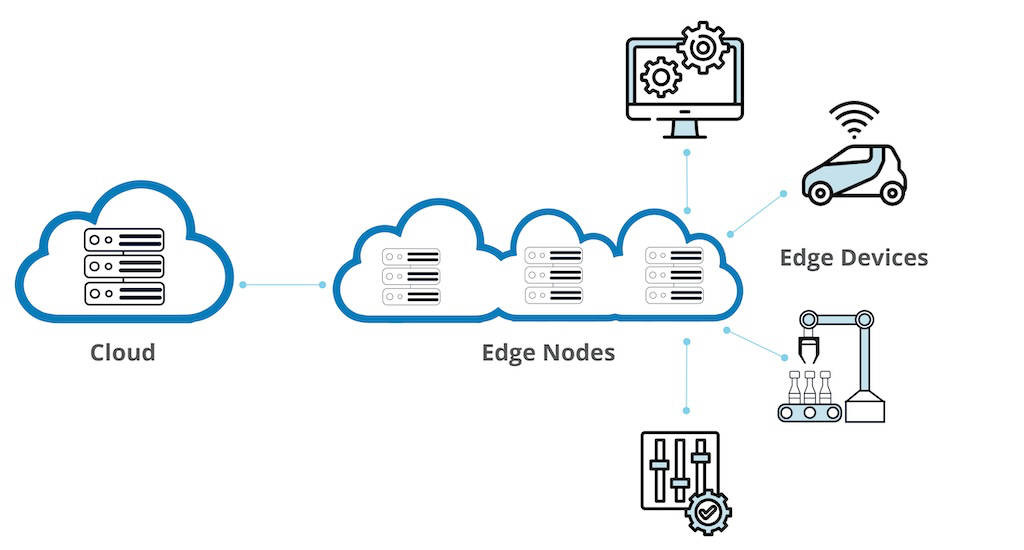The integration of networking systems and edge computing is revolutionizing data processing and enhancing real-time decision-making across key industries

Learning Objectives
- Understand the significance of integrating networking systems and edge computing in transforming data processing, reducing latency and enhancing efficiency in various industries.
- Explore the potential benefits and challenges of this technological convergence.Â
- Evaluate the opportunities and challenges businesses face in adopting networking systems and edge computing.
Digital insights
- The ongoing integration of networking systems and edge computing is revolutionizing data processing digitally, enhancing efficiency and enabling real-time decision-making in a rapidly expanding digital world.
- Businesses that strategically adapt to the evolving digital landscape — seizing opportunities presented by integrating networking systems and edge computing — can gain a competitive advantage and thrive in today’s market.
The digital world is on the verge of a revolutionary transformation, mainly driven by the integration of networking systems and edge computing. This shift goes beyond conventional methods of processing data, pushing boundaries to enable more efficient and real-time decision-making.
It’s a critical moment for businesses across all sectors, where adapting to this evolving landscape is not just a strategic move but a necessity to remain competitive. This transformation is changing industries, setting a new standard for technological advancement and positioning those who embrace it as pioneers in the field.
Revolutionizing data processing digitally
The integration of networking systems and edge computing marks a significant milestone in recent years. This convergence is not just about combining technology but represents a substantial shift in how data is processed and used.
Networking systems, traditionally central to data transmission and communication, are now intertwined with edge computing’s capability to process data closer to its source. This integration is transforming the way we manage vast amounts of data, reducing latency and enhancing data processing efficiency in a rapidly expanding digital world.
For instance, real-time data processing using edge computing is becoming crucial in autonomous vehicles where, in a split second, an enormous amount of data needs to be processed locally.

Enhancing real-time decision-making with digital tools
The integration of these technologies has greatly improved the ability of organizations to make informed decisions in real time. This ability is particularly valuable in industries where prompt decision-making can have a huge impact on outcomes.
For example, in health care, instant analysis of patient data can lead to rapid diagnosis and treatment plans, potentially saving lives. In financial services, it allows for faster transaction processing and fraud detection, thus protecting both the institution and its clients.
In manufacturing, this integration enhances operational efficiency and predictive maintenance, leading to reduced downtime and increased productivity. The automotive industry benefits from advancements in autonomous driving systems.
Challenges in the evolving digital landscape
Although technological convergence has numerous advantages, it also presents various challenges. One of the most critical challenges is ensuring data security in a more distributed computing environment. Moreover, it is crucial to have a robust infrastructure to support these technologies.
The demand for skilled personnel capable of managing and optimizing these integrated systems is another significant challenge. One of the biggest barriers remains the investments required for this transformation. To fully harness the potential of this technological convergence, businesses must address these challenges.
Opportunities and strategic adaptation
Integrating networking systems and edge computing presents numerous opportunities for innovation and efficiency. Businesses can harness this technology to improve operational efficiency, enhance customer experiences and create new opportunities.
However, seizing these opportunities requires strategic adaptation. Organizations need to invest in the proper infrastructure, develop new skill sets among their workforce and foster a culture of innovation to stay ahead.

Transformation, adoption for a competitive advantage
In a fast-paced digital economy, businesses must embrace technological transformation to gain a competitive edge. Companies that successfully integrate these technologies can expect to see improvements in efficiency, agility and customer satisfaction, positioning themselves as leaders in their respective industries. In short, embracing and adopting these technologies is no longer just beneficial, it is an essential competitive advantage for businesses to thrive in today’s market.
The future of networking systems and edge computing is on the verge of a transformation marked by promising innovations. As these technologies continue to evolve, the horizon is expanding with excess innovative applications and enhanced efficiencies. This advancement is involved with emerging trends like the internet of things, industrial internet of things, artificial intelligence and machine learning, which are expected to weave more profoundly into the fabric of networking and edge computing, forging systems that are not only more sophisticated but increasingly autonomous in nature.
This ongoing integration is far more than a fleeting technological trend; it represents a fundamental paradigm shift, redefining the shapes of the digital landscape. For businesses, this change is not just an option but a requisite adaptation to stay relevant and competitive. Those who embrace and harness the power of this convergence will likely find themselves at the forefront of digital transformation, using these advances to fuel innovation, drive efficiency and carve out a competitive edge. This transformative journey promises a future where embracing technological convergence is synonymous with driving business success and innovation.


